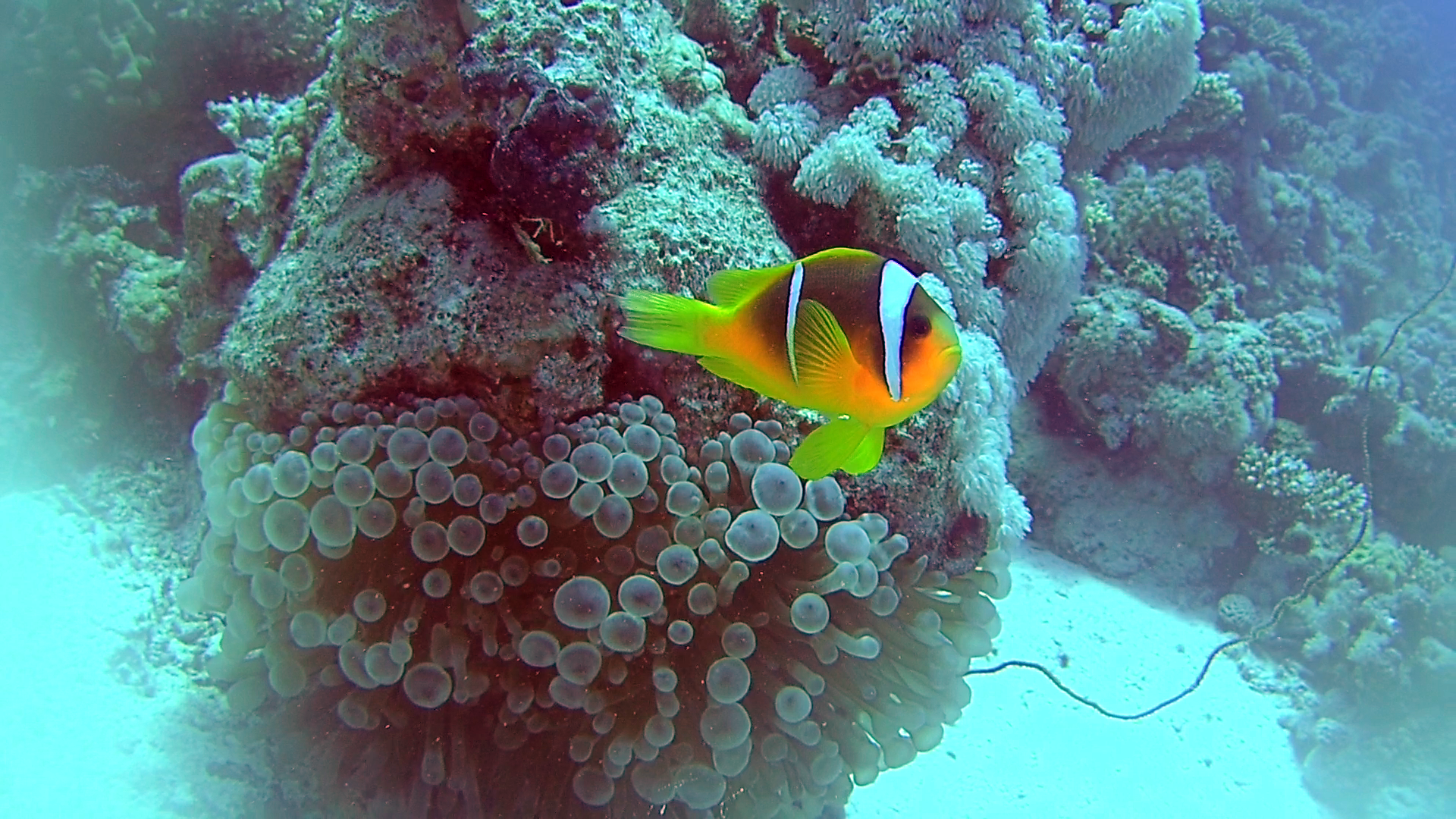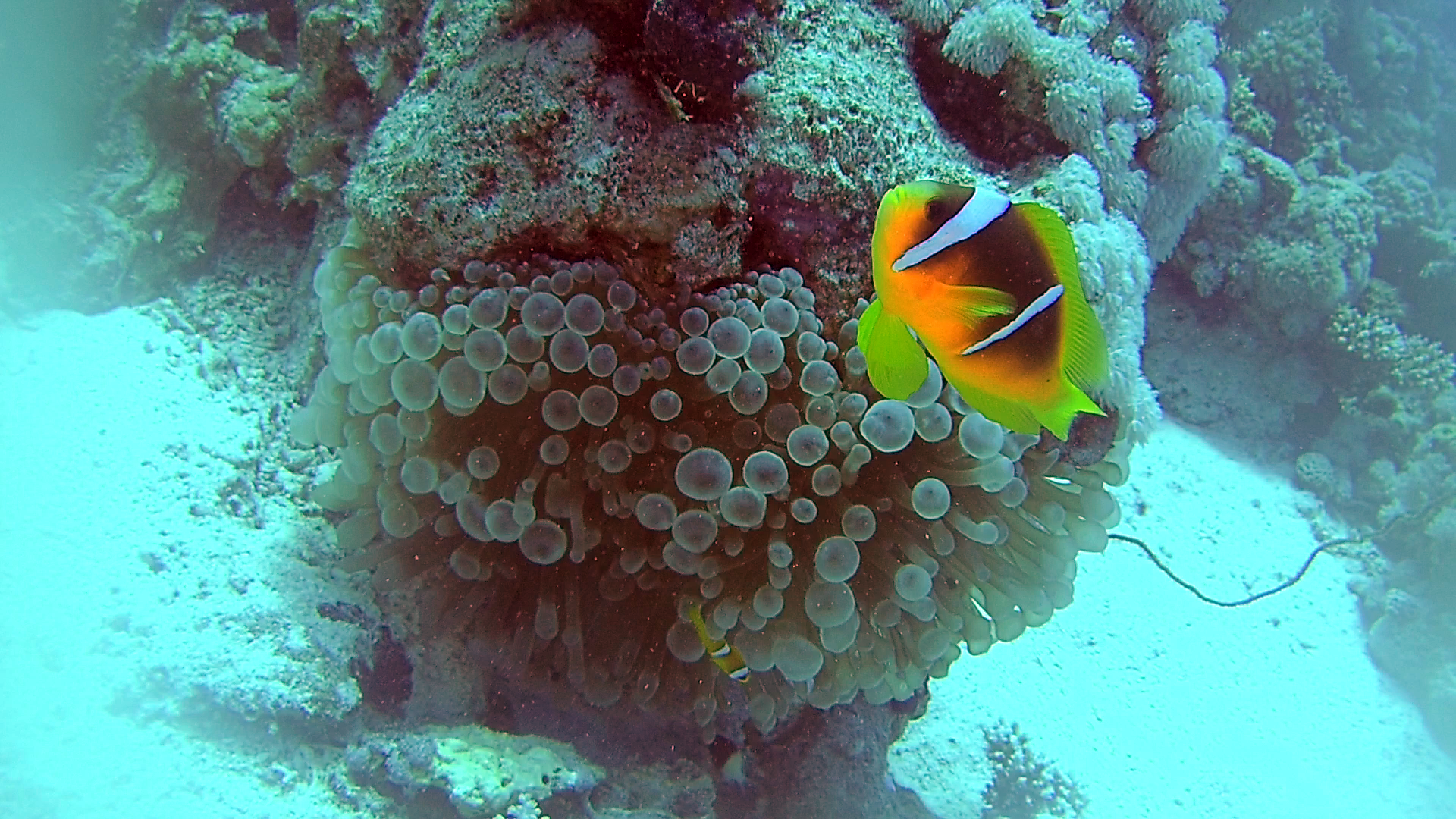Pesce Pagliaccio di Clark - Amphiprion clarkii
Amphiprion clarkii, known commonly as Clark’s anemonefish and yellowtail clownfish, is a marine fish belonging to the family Pomacentridae, the clownfishes and damselfishes. Amphiprion clarkii pesce pagliaccio di Clark o coda gialla intotheblue.it

Description
Clark’s anemonefish is a small-sized fish which grows up to 10 cm as a male and 15 cm as a female. It is stocky, laterally compressed, and oval to rounded.
It is colorful, with vivid black, white, and yellow stripes, though the exact pattern shows considerable geographical variation. Usually it is black dorsally and orange-yellow ventrally, the black areas becoming wider with age. There are two vertical white bands, one behind the eye and one above the anus, and the caudal peduncle is white. The snout is orange or pinkish. The dorsal and caudal fins are orange-yellow, and the caudal fin is generally lighter in tone than the rest of the body, sometimes becoming whitish.

Distribution and habitat
Among the clown fish, it is the most widespread species, present almost in all the area of its subfamily. It lives in the tropical waters of the Indo-Pacific. Is present, indicative title, from Tanzania to the Persian Gulf, to the island of Mauritius and to the Maldives, in Sri Lanka, to the Andaman Islands, in Thailand, Australia, Indonesia, Malaysia, New Guinea, Micronesia, Philippines, Taiwan and China up to to the south of Japan. In the southern hemisphere it reaches Tonga and New Caledonia. It lives only in the coral reefs of the areas indicated, at a maximum depth of 50-60 m, but can often be found even at less than 5 m of depth. If we find ourselves in a barrier of these places then, it will not be difficult to find it, always in the company of other specimens and its symbiont anemone.Amphiprion clarkii pesce pagliaccio di Clark o coda gialla intotheblue.it

Supply
It feeds on phytoplankton (diatoms), zooplankton, annelids and zooplankton, which it captures with the typical expandable jaw mouth of planctivor fish. It also feeds on the food residues of the symbiont anemone.
Mutualistic symbiosis
Like all clown fish, it has a mutualistic symbiosis (which benefits all the species involved) with some species of sea anemones or actinias. Anemones are equipped with stinging nematocysts for almost all coral reef creatures, but the clownfish is immune to them due to a special mucosa that mimics their characteristics, so the anemone will recognize the body of the fish as a part of itself same. From this relationship the fish gains protection: no predator would ever come close to an anemone, so the fish just spies a danger into it.

In fact, all the clown fish have learned not to ever stray from their symbiotic anemone, and spend their whole lives there. Furthermore, the anemone is also a source of food for the fish, which sometimes performs a cleaning symbiosis: the fish obtains nourishment, and the anemone has no more parasites.
Another advantage for the actinia is, also for her, defense against predators: the butterfly fish (family Chaetodontidae) of coral reefs feed on the tentacles of anemone, but the small clownfish are excellent guardians and defend their home at the cost of life: in the end without the anemone the small fishes would be defenseless and immediately prey to one of the many predators of coral reefs. Another hypothesis of one of the advantages of the anemone, is that the clown fish acts as a bait for some of its predators, which to capture it would be blocked by the tentacles of the anemone, which thus take free food.
https://it.wikipedia.org/wiki/Amphiprion_clarkii
